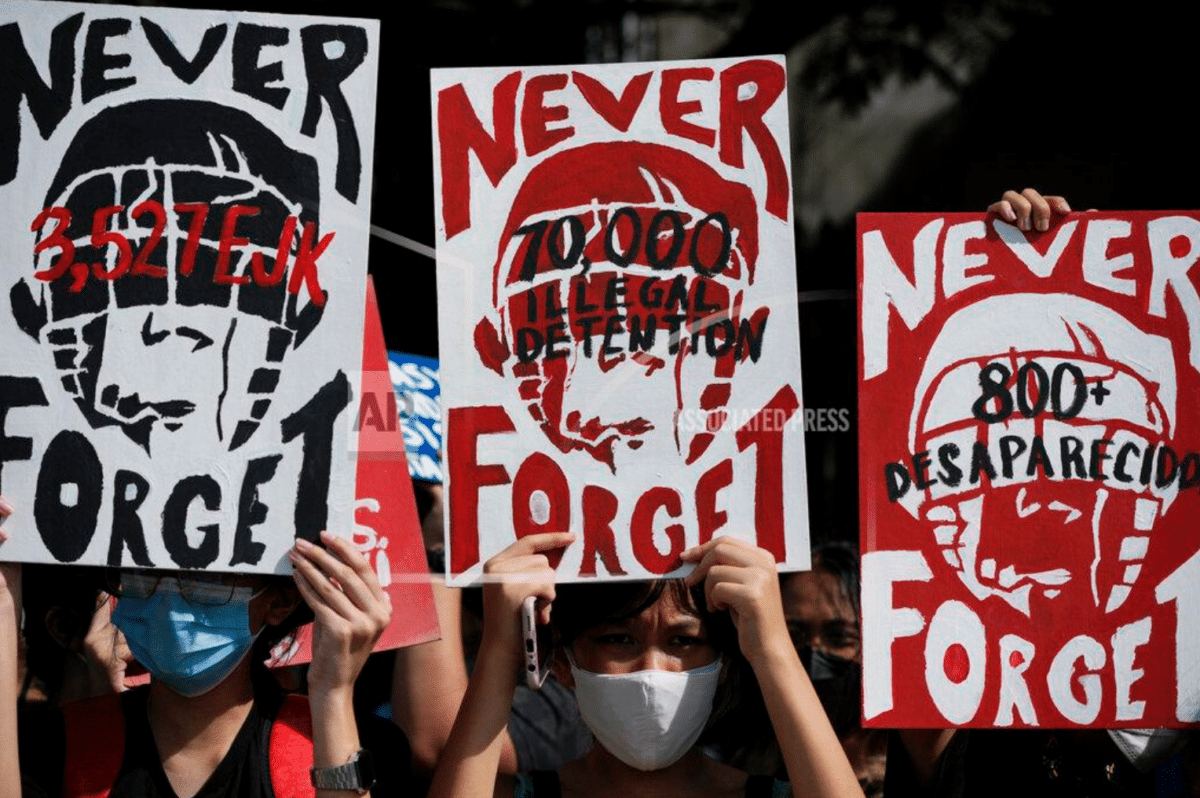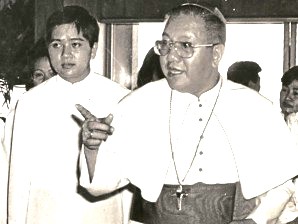
FILE PHOTO
In the Philippines, a tiny percentage of the 4,000 clergy and 15,000 nuns who could no longer withstand the Martial Law abuses eventually pledged allegiance to various Marxist-Maoist movements and “shook, rattled, and rolled” the Catholic hierarchy.
A number of social action directors of some dioceses turned into rebel priests and nuns, and secretly offered direct assistance to the underground movement.
If truth be told, Marcos (1917-1989) and Marx (1818-1883) had one thing in common. They relied on “Power is Might,” depriving many citizens of human dignity and freedom in the process. Though separated by different historical periods, both optimized the utility of military force to effect social change, hence Martial Law in the case of Marcos.
Subscribe to our daily newsletter
As might be expected, the Catholic Church in the Philippines was simultaneously fighting two evils: the Marcosian tyranny and Marxism.
Catholic clergy arrested
President Marcos was brilliant and calculating, but cagey and distrustful. He grew up with that nature. As head of a nation, while he favored his anointed ones, he made himself infamous for winning more enemies by refusing to take the strong wind out of the sails of suspicion.
ADVERTISEMENTIn his own “Reign of Terror” of the 1970s, Marcos unleashed his attack dogs and instigated the most brutal crackdowns, threatening the Catholic Church and sparing none. The military red-tagged a hundred Catholic clergy, including Bishops Francisco Claver, SJ, of Malaybalay, Ka “Tony” Fortich of Bacolod, Julio Labayen of Infanta and four other prelates, and ordered their arrest after accusing them of subversion.
On September 21, 1973, the military also arrested dozens of priests and seminarians, including Amado Picardal. Fully armed soldiers brought an unarmed 18-year-old seminarian to Camp Sergio Osmeña in Cebu, did the unimaginable, and dumped him inside a small, dark and windowless “dragon room.”
There the teenager endured solitary confinement. In between severe tortures, he penned his daily agony in a diary he called “A Prisoner’s Psalm” [a copy personally given to this writer by Picardal]. I cite an excerpt:
ADVERTISEMENT“My fingers are swollen, I cannot clench my fist.
My ribs are broken, I cannot stand upright.
My whole body is inflamed, it is getting numb…”
“I was thirsty and they forced me to drink rum.
To loosen my tongue and reveal to them the truth.
They stripped me off my clothes and my dignity…”
On March 19, 1974, Most Rev. Jaime Sin was installed as the 29th Archbishop of Manila.
President Marcos deemed all those who opposed him as Marxist-Maoist followers and set the entire Metro Manila as the center stage of his red-tagging Marcosian drama. The Church fought Communism, and yet the Church was accused of being Communist.
The armed military began a manhunt operation for political dissident Joma Sison, who was the head of the Maoist-leaning Communist Party of the Philippines (CPP), whom they believed to be hiding in Metro Manila.
On Aug. 24, 1974, on such pretext, a contingent of 150 soldiers in full combat gear raided the erstwhile quiet Jesuit Sacred Heart Novitiate in Novaliches, Quezon City, and arrested Jesuit Fathers José Blanco and Benigno Mayo, and 21 youth leaders of the Student Catholic Action (SCA) who were attending a workshop at the Novitiate.
Of all places, they looked for a CPP-NPA leader inside the Catholic Church premises. One thing was very sure: that the suspected rebels, Father Blanco and the Jesuit provincial superior Very Rev. Fr. Benigno Mayo, were neither Marxists nor Communists.
It was one huge miscalculation on the part of the tyrant, for it happened in the same year that Jaime Sin became Archbishop of Manila. Without yet warming his seat at the Manila Cathedral, Archbishop Sin issued a pastoral letter (1974) condemning the illegal arrest and detention of Jesuit Fathers Blanco and Mayo, his letter sounding very far from diplomatic.
He also presided over a prayer vigil for the detained priests, a prayer vigil that turned out to be the largest anti-Martial Law protest at the time.


Jaime Cardinal Sin / FILE PHOTO
Catholic leadership during Martial Law
The late President Noynoy Aquino (1960-2021) remembered how the Catholic bishops, priests and religious nuns supported the Aquino family. “Martial Law deprived our family not only of a loving husband and father. Many of our friends avoided us. There were a few who dared to speak up. One of those was Fr. Toti Olaguer, SJ, who, right in the heart of the dictator’s most secure prison, had the courage to speak the truth about Mr. Marcos’ abuses, even as he was being videotaped.”
During the most trying times of Martial Law (1972-1981), the Church was there, walking the talk of the Catholic social teachings, a role the Catholic pastors played with conviction.
And PNoy did not forget. “Many others in the Church, such as Jaime Cardinal Sin, Bishop Francisco Claver and Bishop Antonio Fortich, just to name a few who truly lived their Faith and acted as followers of Christ in being their brothers’ keepers,” he recalled.
“The courage and daring displayed by the clergy solidified my belief: Especially during the Martial Law years, the Church of the poor and oppressed shone vividly. The clergy was always at the forefront of those wanting to emulate Christ and carry the burdens for all of us,” Pnoy remembered so warm-heartedly, and what he remembered he told Pope Francis at the Malacañan Palace in 2015.
He was then the Philippine President, and the Holy Father was on an official visit as Sovereign of the Vatican State.
President Aquino, unlike his successor, showed his deep appreciation for the religion that guided his boyhood and adolescence, and his mature life until the end, until his death in 2021, surrounded by his Jesuit friends. Man and boy, he was proud to be a Filipino and a Catholic.
Dr. José Mario Bautista Maximiano is the Lead Convenor of the Love Our Pope Movement (LOPM) and author of the 3-volume work on Church Reforms (Claretian, 2023, 2024, 2025) and the 3-volume work on 500 Years of Christianity in the Philippines (Claretian, 2021, 2022). Email: [email protected]
Want stories like this delivered straight to your inbox? Stay informed. Stay ahead. Subscribe to InqMORNING jilibonus+
MORE STORIES Liam Payne: Beloved celebrity’s death can be painful – but collective grief can help Curry leads Golden State Warriors in 139-104 season-opening Former Presidents Obama, Clinton urge Fil-Ams in Nevada to vote early Don't miss out on the latest news and information.